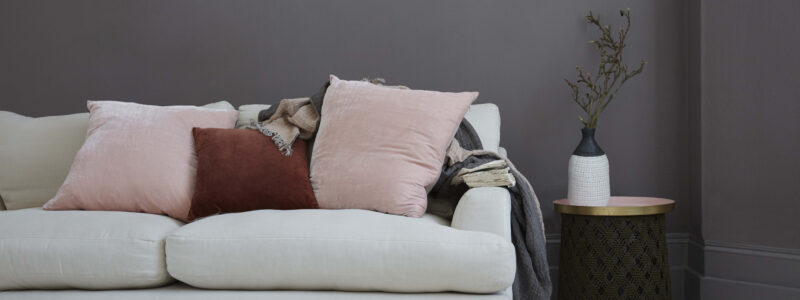How to paint old, damaged or uneven walls
22nd November 2021

The interior walls of many older properties can be uneven and irregular. With a combination of old plaster, new plaster and layers of paint, the idea of simply repainting the walls isn’t necessarily straightforward. This is usually the case when repairs have been carried out to a property, such as channelling in cables, removal of old wallpaper, or resolving damp.
If this sounds familiar, you may be wondering how best to paint your walls, and which paint or products to use. So in this post, we look at how best to tackle painting old, damaged and uneven walls…
Painting over old, uneven walls
Painting over existing layers of paint is usually the easiest option. A paint that has high coverage and a thick texture, such as our Claypaint or Lifestyle emulsions, will even out any hairline cracks and slightly bumpy surfaces. Both products can go over a multitude of wall substrates. However, on lime plaster we’d only recommend using Claypaint due to its high level of breathability.
If you can’t face removing existing coatings, patch repair any cracks before sanding the walls to provide a smooth surface on which to paint. On previously painted walls and standard gypsum plaster, you can use regular filler. But on lime plaster, Earthborn’s Casein Filler will ensure the area remains breathable. Use an electric sander or fine grit sanding block to achieve a flat finish, paying particular attention to the edges of walls, around sockets and switches.
There’s no need to use a separate primer with Earthborn’s interior paints, but for walls that are powdery to touch, our Wall Glaze will help to stabilise the surface prior to painting. It’s breathable too so can even be used on lime. And before painting over any dry stains (like marker pen, watermarks or nicotine) use our Isolating Primer to prevent stains from bleeding through.
Depending on how irregular the surface of your walls however, adding further coats of paint won’t always fix the issue. You’ll end up with a consistent colour, but the texture will remain uneven. Therefore painting over an old, damaged wall may not always be the best course of action for your property. This is especially the case if your walls are cracked, very dusty or have signs of damp.
Tackling damp walls
If there are any issues with damp in the walls (this blogpost on tell-tale signs of damp may help) then it’s worth considering removing any paper and as much old paint as possible. It’s not always an easy process but can be done by sanding, using a heat gun, or paint stripper.
You may need to remove the plaster too. Especially if it is crumbling or cracking, and take the wall back to brick. This can be a big job, but is often worth it in the long run. If your house is old and has been repaired over the years with non-breathable materials (like standard gypsum plaster and non-permeable paints) damp may be trapped in the walls, and removing non-breathable materials is the only way to resolve this. In this case, re-plastering the walls with a breathable, lime based plaster will enable the damp to dry out. This is done by allowing moisture to pass through the wall easily.
This can even be done to sections of wall which are most affected by damp (often the lower half), and leave the other areas that are sound and stable. If this is the case, there aren’t many coatings that will be suitable for both lime plaster and previously painted areas. Breathable lime wash for example, won’t always adhere to existing paint, and conventional paints aren’t suitable for going over lime. Claypaint however, can be used on both substrates whether breathable or non-breathable. So it’s the perfect solution for older properties with a mixture of substrates.
Painting over plaster
Standard gypsum plaster can be overpainted with Claypaint virtually straight away. If painting with Lifestyle it needs a day or two to dry out.
For new lime plaster however, the plaster needs time to fully cure before painting. We recommend around 4 weeks per 5mm thickness, although your lime supplier will be able to further advise. Painting before the lime has fully cured can cause the paint to dry unevenly and appear ‘bleached’. It can also inhibit the drying process of the lime plaster too.
And when it comes to painting any absorbent surface – whether new or old lime or standard plaster – it’s important to dampen the wall immediately prior to painting, and dilute the first coat of paint. The will prevent the paint from drying too quickly and provide a more consistent finish.
If you have further questions about painting old, damaged or uneven walls, our FAQs are full of helpful tips. Or you can contact us with your specific query here.




